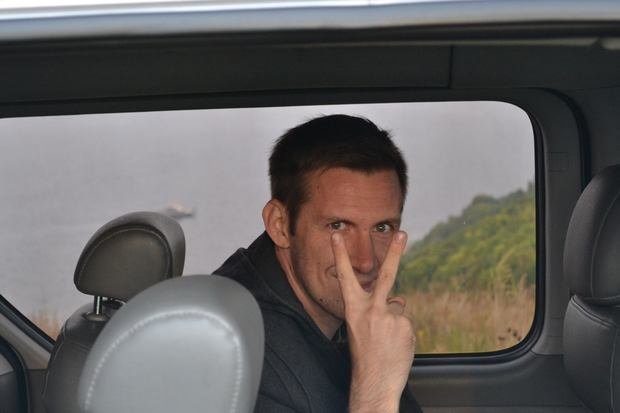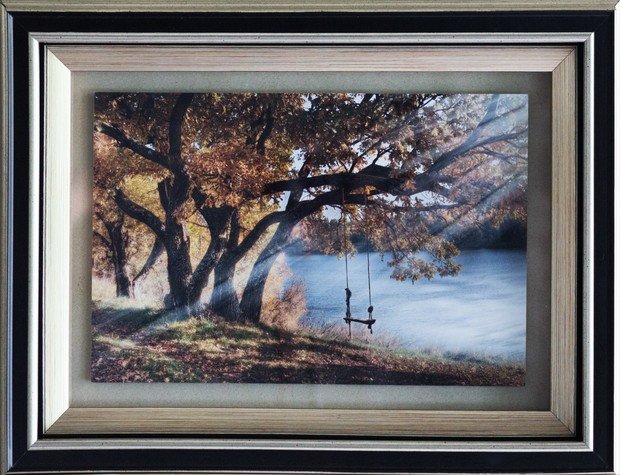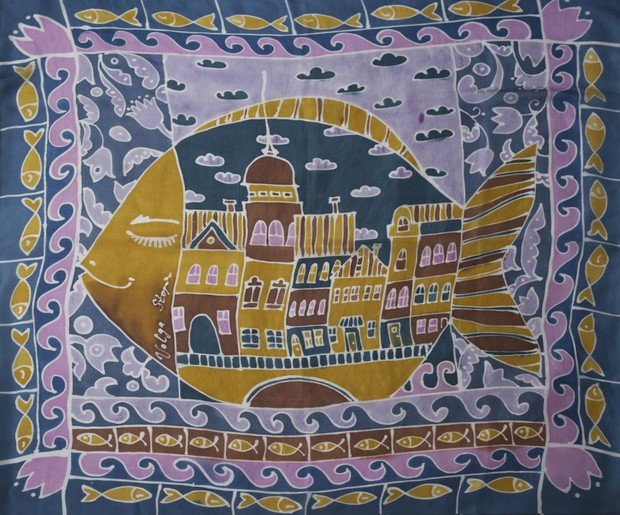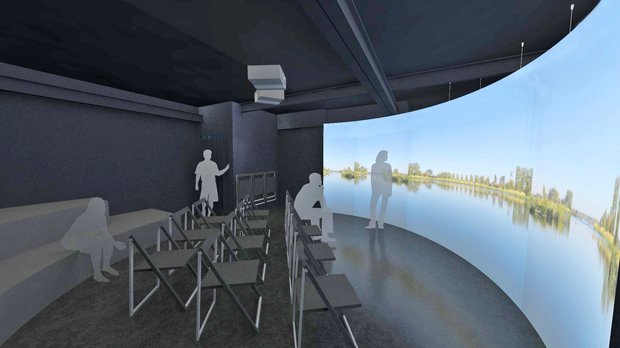''People forgot that there are brands such as Pushkin, Tolstoy, Bolshoi Theatre, Volga''
A group of enthusiasts has created a cultural project, which plans to give the brand of the great river world importance
Two years ago, in Kazan there appeared the project Volga Story, which an initiative group of people who are not indifferent to the place where they were born organized using their own money. The aim of the project is to awaken sentimental feelings of everyone who grew up and lives on the Volga River as well as of tourists who have not imbued with this geographical brand yet. However, the project also has a super task, which can be solved by only a handful of cultural projects — to reach full self-sufficiency. The creative director of Volga Story tells how they are going to realise it in the material of Realnoe Vremya.
Culture can and should be self-financed
At the start, the founders of Volga Story had a lot of ideas of how to popularize the culture and history of the Volga River, says Danil Badreyev, the creative director of the project. They decided on three areas: workshops of artists and designers who create in the near-Volga topic, an interactive museum of the Volga River in the centre of Kazan, an art-residence in the village of Verkhniy Uslon as a starting point for tourist activities of Volga Story.
The ideological inspirer of the project is Nina Kalmykova, creative director — Danil Badreyev, who previously worked in marketing in Moscow on promotion of ethnographic films and other creative projects. At Volga Story he supervises the creation of the museum. He, like other participants of the project, comes from Kazan and believes that our main waterway is unjustly deprived of attention.
''We all believe that Volga receives unfairly little attention, especially here, in Kazan, although the river always had a great impact on the history of the city. But after the construction of the Volga-Kama hydroelectric power station, the river as if ceased to be noticed. As a result, we do not even have a normal waterfront like in other Volga cities such as Samara, where the whole urban life is concentrated there,'' Danil Badreyev says. ''The Volga River in Kazan is closed with industrial areas and the railway, but even this does not prevent foreigners and residents of other Russian cities to consider our city to be a Volga city first and foremost, and in the second place — the city of gyms.''
The project Volga Story, Danil Badreyev explains, takes it upon itself to position Volga as the cultural brand of Russia.
''Today we have stereotypical brands: matryoshka, Kalashnikov, Putin, vodka, balalaika. But people have forgotten that there are brands such as Pushkin, Tolstoy, Bolshoi Theatre, the Volga River.''

Everything that has been done for the Volga River and has been written about the Volga River in Tatarstan so far is disproportionately little compared with the magnitude of this topic. These activities do not contribute to make it a Russian brand, says Danil Badreyev.
''All this was rather obligation than creativity, everything was reserved, nomenclatively, boring. That is why we undertook the task to look for really interesting newsworthy events about the Volga River. Our concept is a bit naive, we admit it, but we speak about Volga that is beautiful, luxurious, maybe even glossy. We turn a blind eye to the negativity, we leave environmental issues to ecologists — they are professionals in this. But we do not refuse to cooperate with them, they themselves recognize that their aggressive position of boycotts, rallies does not yield results. They understand that a good strategy to promote the environment through culture, artists, events can help.''
During the first year, the project operated in the format of laboratories without bringing any money. They in the project do not reveal how much was invested and how soon it is planned to recoup investments. But initially, Volga Story was established as a commercial company because, as the organizers thought, it was possible to monetize cultural history.
''We do not set ourselves financial goals, for example, to achieve a certain level of turnover or profit by 2019. The task is to make the project self-financed, so we are creating such symbiotic models that allow the project to stay afloat. For example, in the case with the Art-residence, the cash flow from the sale of rooms will go to purely creative projects.''
A piece of art and history in one package
The creation of workshops is the first thing with which Volga Story started, but it is not an exhibition or an art shop. In fact, it is an artel uniting salaried and freelance artists, photographers, designers. They create here at the commission of Volga Story, then they have the opportunity to find a buyer of their works here. They can also conduct their master classes.

Volga Story's residents are leader of the workshops Zhenya Baburina, member of the Russian Union of Artists Alina Zamilova and master of batik Valeria Merzlyakova. Volga Story collaborates with dozens of artists on freelance basis. Expert councils of art historians, artists and, importantly, salesmen — because they need to know what is in demand in the market, assess the compliance with the requirements of both the project and the market. Working conditions with all artists are different: someone is interested to have interests from sales, someone — to be paid for labour and materials.
''Our products are exclusive, we pack everything in premium packing, we plan to sell at the federal level — through souvenir boutiques, through lobbies of five-star hotels, in own showroom and in Point of experience (Penta House). We do not seek to open many outlets in Kazan, two or three will be enough. We are planning a line of more affordable art and design items, but in the future. We have participated in Open Space Market, but in order to study the audience, see the demand. It turned out to be high.
Marketing component in the cost of art objects of Volga Story is obviously considerable.
''We believe that we sell not pictures in frames, but the carriers of the Volga sentiments: when the customer hangs the picture on the wall or ties a handkerchief on his or her neck, he or she is in constant dialogue with the river,'' says Daniel Badreyev.
In the autumn, Volga Story took up the construction of a three-storey residence in the village of Verkhny Uslon, interior decoration is being completed. The art-residence will function as a hotel and hostel in one of the most picturesque places on the banks of the Volga river, where, according to the idea of the founders of Volga Story, artists will come to participate in laboratories, workshops, for joint creativity in a pleasant developing environment, as it happened before the revolution in the country houses of artists.
''Similar residences are organized by municipalities of remote regions to attract tourists, to culturally sate their cities. We create a symbiosis of art-residence and hotel, so that not necessarily artists, but also ordinary people could live in a creative environment, participate in workshops, open-airs, do yoga, participate in trainings.''

The landmark location was chosen for the residence — right above Uslon there is the mountain Sokolka, from which ''the Beloczechs'' tried to capture Kazan. The name of Sokolka appeared because at that place there wielded real pirates, for them the landscape of the right bank, where Volga makes the so-called ''great reversal'', was very convenient to plunder passing-by ships. And further from Uslon – there are no less important places interesting for trekking tourism: Pechishchi, Tenki, Kamskoe Ustye, Tetyushi and Dolgaya Polyana. Volga Story has created two trekking routes, which are planned to be launched in the summer and improved in the winter. Danil Badreyev believes that the trend for this type of domestic tourism has reached Russia from abroad.
Further down the Volga River
The most expensive of all projects and, perhaps, the most difficult in monetization is the museum. It is the space of multimedia installations, without expositions like in the classical museum, where the exhibits, in fact, illustrate the story of the guide. Volga Story is something between museum and attraction, says Badreyev. Such media format of the presentation allows to place a large amount of information on a small territory. Besides, tourists have formed a request for such presentation of history — interactive installations, video formats.
''When I was at Intermuseum 2017, I heard positive reviews about the industry: the government has begun to allocate money, the visitor has started to come. But there is a nuance: they are not interested and bored with the format of academic presentation of information, due to social networks people now have the ''line'' perception, and even government projects (for example, in Zaryadye Park) have started to use 4D and 5D technologies in recent time,'' says the creative director of the project.

The Volga Museum is created not only as a tourist object. It is assumed that the installations will be changed from season to season, due to which it will be possible to attract equally Kazan residents and tourists from other cities. ''The first season'' will be devoted to acquaintance with the Volga River, the next, according to Badreyev's idea, — to installations of media artists, their perception of the Volga theme. To maintain the interest of local residents, there will work chamber events for 20-30 people: film screenings, lectures, literary readings, concerts, video performances, media performances (it has been bought out the first production of The Only Shore by Yury Klavdiev, which will be directed by Veronika Chepegina). The first exhibition at the museum will be held in late May — early June.
The information support was provided by the Institute of History named after Mardzhani, as well as private local historians — they provide materials, and the developers of the Volga Museum turns it into a script. The main thing is to captivate them in the history of the Volga River, and then, perhaps, to direct tourists to other areas of Volga Story's activities or to the classical museums, to send to the River port, to suggest when and how one can get to the island city of Sviyazhsk.
''Volga is a storehouse of content, but for some reason the eyes turned to this topic only now, and historians with whom we work (Bakhtiyar Izmaylov, Grigory Ivoylov, Leonid Abramov) willingly responded to our request for help. But we set a difficult task, we are not interested to dump everything that is written in Wikipedia, we want to reveal unhackneyed facts. For example, we took the journey down the Volga River of Catherine the Great — after all, this event cannot be overestimated, because with this, in fact, it began the history of tolerant attitude to the Volga peoples.''
Among the information partners there are also nonresident experts, in particular, the Saratov film company Volga-XXI Сentury, which made a film about the Volga River, which became the winner of the platinum award of the festival of independent cinema in Las Vegas Nevada International Film Festival in 2016.
''We started with Kazan because it is our city, we were born here, and then we will go to other Volga cities. There are people who are ready to take up our initiatives in other cities, in particular, in Cheboksary, Samara, Saratov, Nizhny Novgorod.''